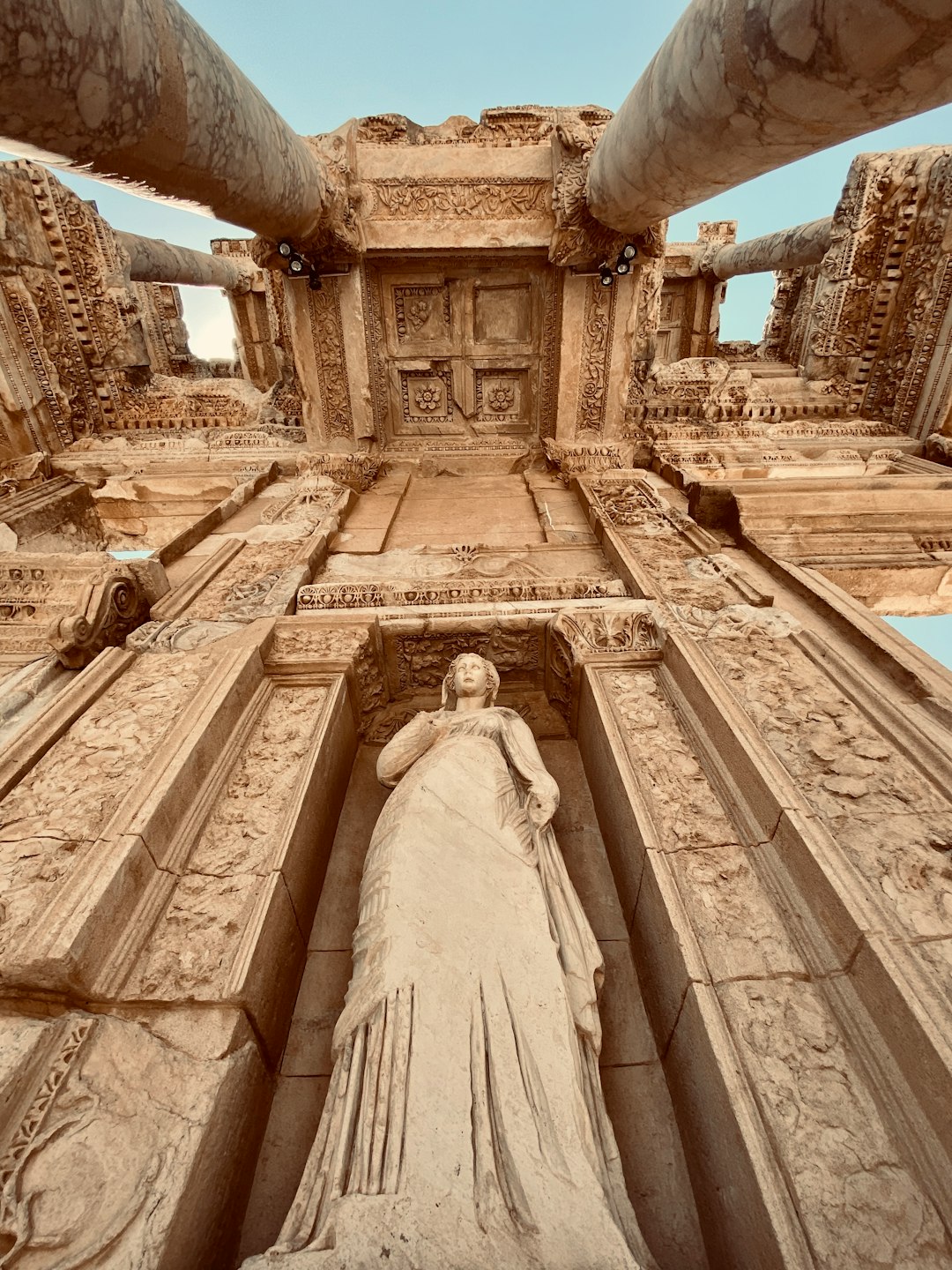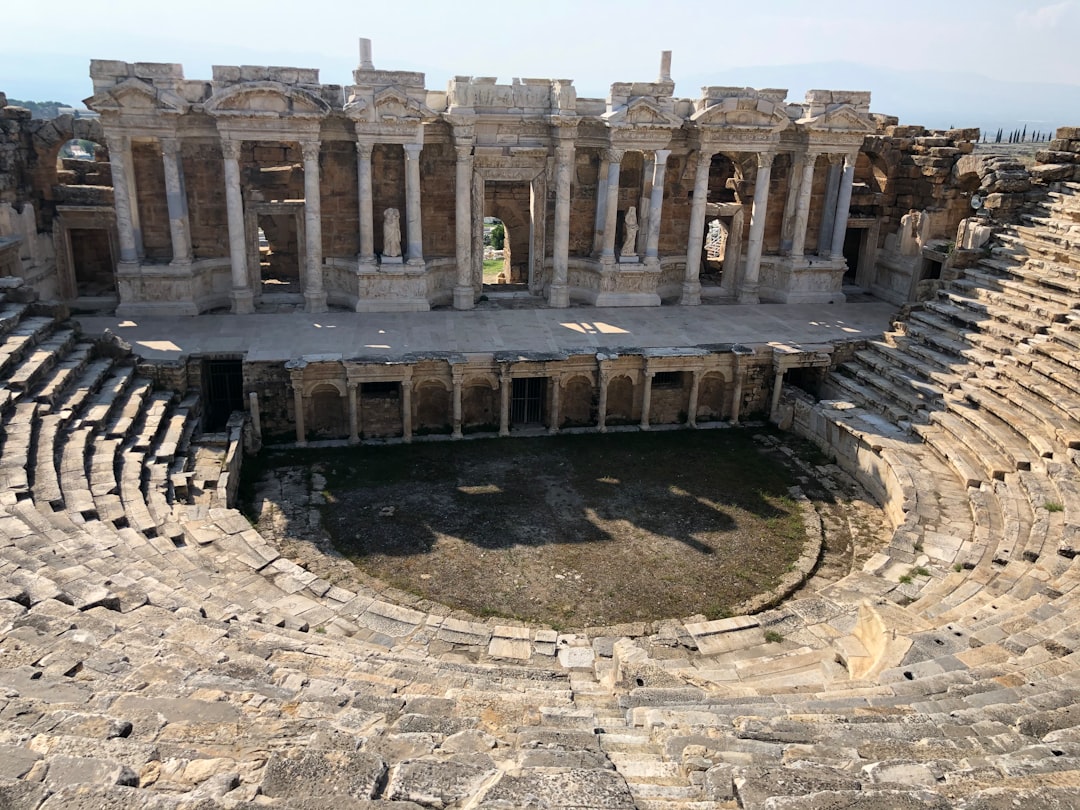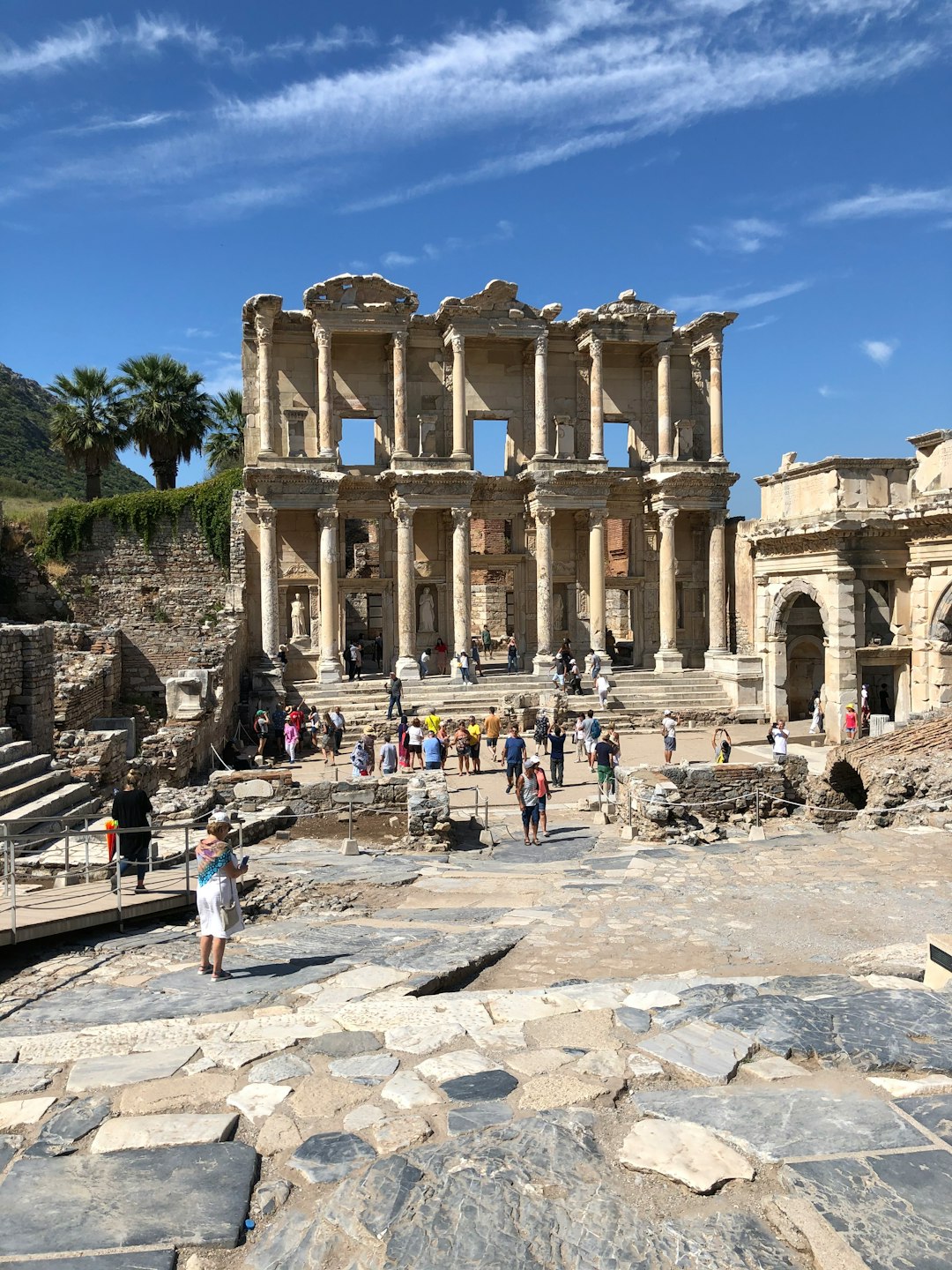
For the ardent history enthusiast, Ephesus stands as a portal to an era rich with ancient grandeur and mystery. Embark on a journey through time with our ultimate Ephesus Travel Guide, designed to unveil the fascinating layers of one of the Mediterranean’s most captivating ruins. As you explore this former jewel of the Roman Empire, prepare to be enthralled by the stories of gladiators, the wisdom of scholars, and sacred traditions that once defined Ephesus. Whether you’re tracing the steps of its storied streets or gazing upon the remnants of the majestic Temple of Artemis, every stone in Ephesus whispers tales that beguile the imagination of every traveler.
Unraveling the History of Ephesus
Stepping into Ephesus is like turning the pages of a living history book, each stone and ruin whispering tales from antiquity. As part of any comprehensive Ephesus Travel Guide, understanding the layered history of this fabled city is paramount to appreciating its timeless allure.
Ephesus was not merely a city but a pivotal hub of culture, trade, and religion spanning over a millennium of human civilization. Originally founded in the 10th century BC by Ionian Greeks, Ephesus flourished under various rulers – from the Lydians to the Persians, and then the might of Rome.
Here are key epochs that shaped the city:
- The Hellenistic Period: After its liberation from Persian rule, Ephesus came under the sway of Alexander the Great and later the Seleucid Empire, marking an era of substantial growth and architectural splendor.
- The Roman Period: Ephesus reached its pinnacle under Roman rule, becoming the capital of Asia Minor and a metropolis of over 250,000 inhabitants, adorned with grand temples, libraries, and theatres.
- The Byzantine Period: With the Roman Empire’s division, Ephesus became part of the Byzantine realm, witnessing the spread of Christianity, with figures like St. Paul walking its streets.
- The Ottoman realm: The city’s decline came as harbors silted up and trade routes shifted. Yet, even in decline, Ephesus’ grandeur was evident as it fell under Ottoman sovereignty.
In crafting your own journey with this Ephesus Travel Guide, you’ll not just explore archaeological wonders but will uncover the legacies of generals, kings, artisans, and everyday people who once called this city home. Understanding its history is not only about connecting with the past but also about drawing parallels with our present, seeing how the city’s evolution mirrors the ever-changing landscape of human society.
To visit Ephesus is to embark on a historical pilgrimage, where each ruin and artifact tells a story of human triumph, ambition, resilience, and the relentless march of time.

Exploring the Temple of Artemis: A Wonder Revisited
When you delve into the “Ephesus Travel Guide”, the Temple of Artemis stands out as a testament to ancient engineering and religious fervor. Once considered one of the Seven Wonders of the Ancient World, all that remains of this grand structure are the foundations and a solitary column. Nevertheless, a visit here evokes the grandeur that was Ephesus.
Here’s an overview of what the Temple of Artemis holds for the eager history enthusiast:
- Historical Context: Built around 550 BC, the temple was dedicated to Artemis, the goddess of the hunt, nature, and childbirth. It has seen multiple reconstructions due to destructive events including arson and earthquakes.
- Architectural Marvel: Though little remains, the original dimensions were staggering. It was approximately 137 meters long and 69 meters wide, with over 127 marble columns each standing 18 meters high.
- Cultural Significance: The temple was not only a religious center but also served as a marketplace and a cultural hub, showcasing artworks and offering asylum to those in need.
To fully appreciate this ancient wonder, consider the following points as part of your Ephesus Travel Guide:
- Reflect on the Scale: Visual reconstructions at the site help visitors imagine the original size and glory of the temple.
- Visit at Sunset: The soft glow of the setting sun adds a layer of ethereal beauty to the remains and the surrounding landscape.
- Local Guides: Hiring a guide can offer in-depth historical insights and make ancient stories come to life.
Although time has taken its toll, the Temple of Artemis still resonates with the energy of its historical significance. By including this remarkable site in your Ephesus Travel Guide, you allow yourself a unique opportunity to revisit a wonder that has fascinated travelers for centuries. This exploration is a cornerstone for understanding the rich tapestry of Ephesus’ heritage.
Walk in the Footsteps of Gladiators at Ephesus’ Great Theater
As you delve into this Ephesus Travel Guide, one unmissable experience is taking a step back into the realm of ancient entertainment at Ephesus’ Great Theater. The feeling is almost transcendental; one can almost hear the distant echoes of roaring crowds and sense the anticipation of gladiatorial combat.
The Great Theater of Ephesus is a testament to the architectural prowess of the ancients. Built into the slope of Panayır Hill, it seated up to 25,000 spectators and served as both a center for theatrical performances and gladiatorial battles. The sheer size of the theater is a spectacle in itself and it offers a stunning view of the Arcadian Way, once a bustling street leading to the harbor.
Here’s what history enthusiasts should explore at the Great Theater:
- The Orchestra: Originally used for musical performances, this semi-circular space later hosted the blood-pumping gladiator fights.
- The Seating Areas: Climb up the tiers to experience the view that spectators enjoyed thousands of years ago.
- The Stage Building: Though much of it is in ruins, the remnants hint at a once grand backdrop for performances.
During your visit, take a moment to imagine the sounds of dramatic dialogues and the clashing of swords resonating off the marble structures. For the best experience, visit early in the morning or late in the afternoon when the site is less crowded and the light casts dramatic shadows across the theater.
Remember, our Ephesus Travel Guide isn’t just about seeing, it’s about feeling the pulse of history beneath your feet. Walking in the footsteps of gladiators at the Great Theater is a profound reminder of the grandeur and brutality of the ancient world, a true highlight for any history enthusiast.
Integrating visits during less crowded times not only enhances your experience but respects the conservation efforts preserving this grand monument for future generations. Now, let the stones tell their story and guide you through the remnants of a once vibrant and lively center of entertainment.
The Library of Celsus: A Monument to Knowledge and Splendor
No Ephesus travel guide would be complete without delving into the grandeur of the Library of Celsus. Constructed in the early 2nd century AD as both a mausoleum and a library, this structure stands as a testament to the Roman love for literature and architecture. Here’s what makes the Library of Celsus a must-visit historical marvel:
- Architectural Brilliance: The library’s facade is a breathtaking example of ancient Roman architecture, featuring four statues that personify Wisdom (Sophia), Knowledge (Episteme), Intelligence (Ennoia), and Virtue (Arete).
- Historical Significance: Once home to over 12,000 scrolls, the library served as an essential hub for ancient scholars and an emblem of the intellectual prowess that characterized Ephesus.
- Reconstruction Triumph: Although destroyed by an earthquake in the 3rd century, the library has been meticulously reconstructed, allowing visitors to experience its splendor as close to the original as possible.
When navigating through the remnants of this ancient city, the Library of Celsus undoubtedly captures the imagination. Visitors can almost hear the echoes of the scholars and philosophers who once roamed its halls. The splendor and intelligence this structure symbolizes are palpable, making it a crown jewel in any Ephesus travel guide.
Best Viewing Times: To fully appreciate its architectural beauty with the warm glow of the Mediterranean sun, visit in the early morning or late afternoon. These times offer the best natural lighting for photographs and a somewhat cooler, less crowded experience.
This exquisite edifice, steeped in history and restored to its former glory, stands as a proud reminder of Ephesus’s significant place in the annals of history. A tour of the Library of Celsus forms not just a visual treat but a journey back to the zenith of ancient knowledge and splendor.

Ephesian Religious Practices: The Cult of Artemis and Early Christianity
As an essential part of any Ephesus Travel Guide, understanding the spiritual significance of the area provides a profound sense of connection to the ancient world. In Ephesus, religion was woven into the very fabric of daily life, epitomized by two major religious practices: the Cult of Artemis and the rise of Early Christianity.
- The Cult of Artemis: At the heart of Ephesian worship stood the Temple of Artemis, one of the Seven Wonders of the Ancient World. This magnificent structure was not only a religious sanctuary but also a symbol of wealth and power. Visitors today can still sense the grandeur that once emanated from its colossal marble foundations. The goddess Artemis, known as Diana to the Romans, was venerated as the patroness of fertility and nature. Remarkably, the worship of Artemis helped shape the city’s identity and fostered a thriving religious tourism industry.
- Early Christianity in Ephesus: As the winds of faith shifted, Ephesus became a critical hub for Early Christianity, particularly when the apostle Paul lived and preached here, as chronicled in the New Testament. The Ephesus Travel Guide would be remiss without mentioning the significant Biblical events that took place here, including the Third Ecumenical Council in 431 AD, which confirmed the Virgin Mary as Theotokos, or “Mother of God.”
The interplay between pagan traditions and emerging Christian beliefs makes for a captivating narrative that history buffs will find fascinating. Whether walking through the remnants of the Temple of Artemis or standing in the Great Theater where St. Paul once addressed the Ephesians, one can imagine the coalescence of religious fervor that shaped this ancient metropolis.
To experience Ephesus fully, exploring these religious sites is indispensable, providing travelers with a deeper appreciation for the city’s complex and rich spiritual history. Remember these insights, and let your Ephesus Travel Guide lead you through a crossroads of ancient faiths.
Ephesus Through the Ages: From Greek to Roman to Byzantine Influences
Ephesus, an ancient city tucked in the heart of modern-day Turkey, is a treasure trove of history that reflects a blend of Greek, Roman, and Byzantine influences. As you follow this Ephesus Travel Guide, you’ll notice the city’s evolution through its layered architectural styles and urban planning. Here are some ways Ephesus has been shaped through different eras:
- Greek Beginnings: Ephesus was founded by Greek colonists in the 10th century BCE. Its original layout, with grid-patterned streets, agoras (marketplaces), and temples, showcases classical Hellenic designs. The city’s strategic location near the Aegean Sea fostered cultural and economic exchanges that enriched its Greek character.
- Roman Refinements: Conquered by Rome in the 2nd century BCE, Ephesus became the capital of Asia Minor and was reinvigorated with Roman splendor. The city’s infrastructure, including its roads, aqueducts, and public buildings, expanded significantly. The Ephesus travel experience would not be complete without marveling at the Roman feats such as the Terrace Houses, which epitomize luxury Roman dwellings.
- Byzantine Legacy: After the decline of the Roman Empire, Ephesus came under Byzantine control, and Christianity gained prominence. The city’s architecture and art began to reflect Christian themes, with several basilicas and relics illustrating this shift. The Byzantine era not only influenced religious structures but also contributed to the city’s fortifications.
These diverse layers of history are evident as one explores the city’s ruins, from the grandeur of the Library of Celsus — a testament to Roman architectural prowess — to the remnants of the Temple of Hadrian, displaying classical Greek features, to the Basilica of Saint John, symbolizing the rise of Byzantine Christianity.
As you absorb the city’s rich tapestry, remember that this Ephesus Travel Guide merely scratches the surface; the real journey lies in wandering Ephesus’ ancient streets, where history materializes before your eyes. The best Ephesus adventure allows you to admire the convergence of cultures and appreciate how each age has left its distinctive mark on this timeless city.
Deciphering Ephesian Inscriptions: Stories Carved in Stone
Ephesus is a treasure trove for historians and linguists alike, with ancient inscriptions providing a window into the lives and thoughts of its former citizens. Touring this historic city as part of your Ephesus Travel Guide experience, you’ll encounter numerous inscriptions that range from public decrees and edicts to personal testaments and grave markers. Understanding these etchings is key to grasping the social fabric of this once-thriving metropolis.
To truly appreciate the stories carved in stone, let’s delve into a few remarkable types of inscriptions you might discover:
- Public Announcements: Often found in the agora or main squares, these messages from the elite or ruling class conveyed laws, political news, or social information.
- Dedications: Temples and public spaces frequently feature dedicatory inscriptions that reveal information about religious practices and benefactors who contributed to the city’s development.
- Epitaphs: Personal inscriptions on gravestones provide insights into Ephesus’s diverse inhabitants and their professions, families, and statuses.
As you explore Ephesus, reflect on these silent but potent narratives. They don’t merely represent the voices of a distant past; they echo the very essence of Ephesian society. Interpreting these inscriptions crowns your visit with a profound connection to the human stories that built this magnificent city.
Despite the erosion of time, the inscriptions remain a crucial element in our Ephesus Travel Guide, connecting us to the ancients who walked these streets. Whether you’re an ardent historian or a casual visitor, the ability to decipher these messages adds an educational and emotional depth to your journey, ensuring it’s not just the ruins that fascinate but also the human tales they enshrine.
To complement your adventure, consider bringing along a guidebook or hiring a local expert who can translate and bring life to the once-vibrant narratives. These stories, set in stone, await to enrich your understanding of a city deeply woven into the fabric of history.

How to Visit: Tips and Best Times for an Ephesus Adventure
Planning your visit to Ephesus is essential to making the most of your journey through history. As part of this Ephesus Travel Guide, here are some indispensable tips for an unforgettable adventure in this ancient city.
Best Time to Visit
- Spring (April to June): The weather is warm but not sweltering, and the tourist crowds are not at their peak.
- Fall (September to November): Similar to spring, the temperatures are pleasant, and the sites are less crowded.
Visiting Ephesus during these seasons ensures a more comfortable exploration of the ruins, and you’re more likely to capture photos without the interference of large tour groups.
Practical Tips
- Arrive Early: Get to Ephesus at opening time to avoid the heat and the bulk of the crowds arriving by mid-morning.
- Guide or Audio Guide: Consider hiring a local guide or picking up an audio guide to enrich your understanding of the site’s complex history.
- Dress Appropriately: Wear comfortable walking shoes, as the ancient streets can be uneven. Also, bring a hat and sunscreen for protection.
Tickets and Tours
- Buy Online: Purchase tickets in advance to save time queuing at the entrance.
- Multisite Passes: Look for passes that offer combined entry to multiple attractions in the area.
Best Experience
- Stay Nearby: Choose accommodation in the nearby town of Selçuk to give yourself ample time to explore the site over multiple days, if desired.
- Visit in the Evening: If possible, take advantage of the occasional evening openings of Ephesus for a unique experience.
To make your trip to Ephesus as enriching as possible, strategize your visit by considering these essential tips. By planning ahead and knowing the best times to explore, you can immerse yourself fully in the awe-inspiring history that Ephesus has to offer. This Ephesus Travel Guide is your key to unlocking a profound connection with the ancient world.
Preserving the Past: Conservation Efforts and the Future of Ephesus
As a destination steeped in antiquity, Ephesus stands as a beacon of historical preservation, compelling travelers and historians alike to consider its future as much as its past. For anyone turning the pages of this Ephesus Travel Guide, it’s vital to recognize the conservation efforts that ensure Ephesus remains not just a chapter in history books but a tangible experience for generations to come. Here’s how preservation shapes the future of this ancient site:
- International Collaboration: Ephesus’s significance has long been acknowledged by the global community, leading to partnerships amongst various countries and organizations, such as UNESCO, to fund and implement preservation projects.
- Restoration Projects: Meticulous restorations have been undertaken to stabilize ruins, reconstruct key structures, and protect relics from environmental threats. These include the re-erection of columns, refurbishing frescos, and efforts to mitigate the impact of weathering.
- Visitor Management: Balancing visitor access with preservation needs is crucial. Measures put in place include walkway systems to minimize foot traffic on ancient stones, limited daily visitor caps, and guided tour protocols to manage the flow and impact of tourists.
- Archaeological Research: Ongoing excavations not only uncover new pieces of history but inform better conservation techniques. Scholars and archaeologists continuously analyze the site to adapt to the needs of the ruins.
- Sustainable Tourism: Advocacy for responsible tourism practices is growing. Travelers to Ephesus are encouraged to uphold ethical standards—such as not removing artifacts or damaging structures—contributing to the site’s longevity.
Understanding these efforts is a fundamental part of the Ephesus Travel Guide. They serve as a reminder of the fragility of our connection to the past and the role we all play in safeguarding it. The future of Ephesus doesn’t solely rest on the shoulders of conservationists but also on the mindfulness of each visitor who walks its ancient paths.



